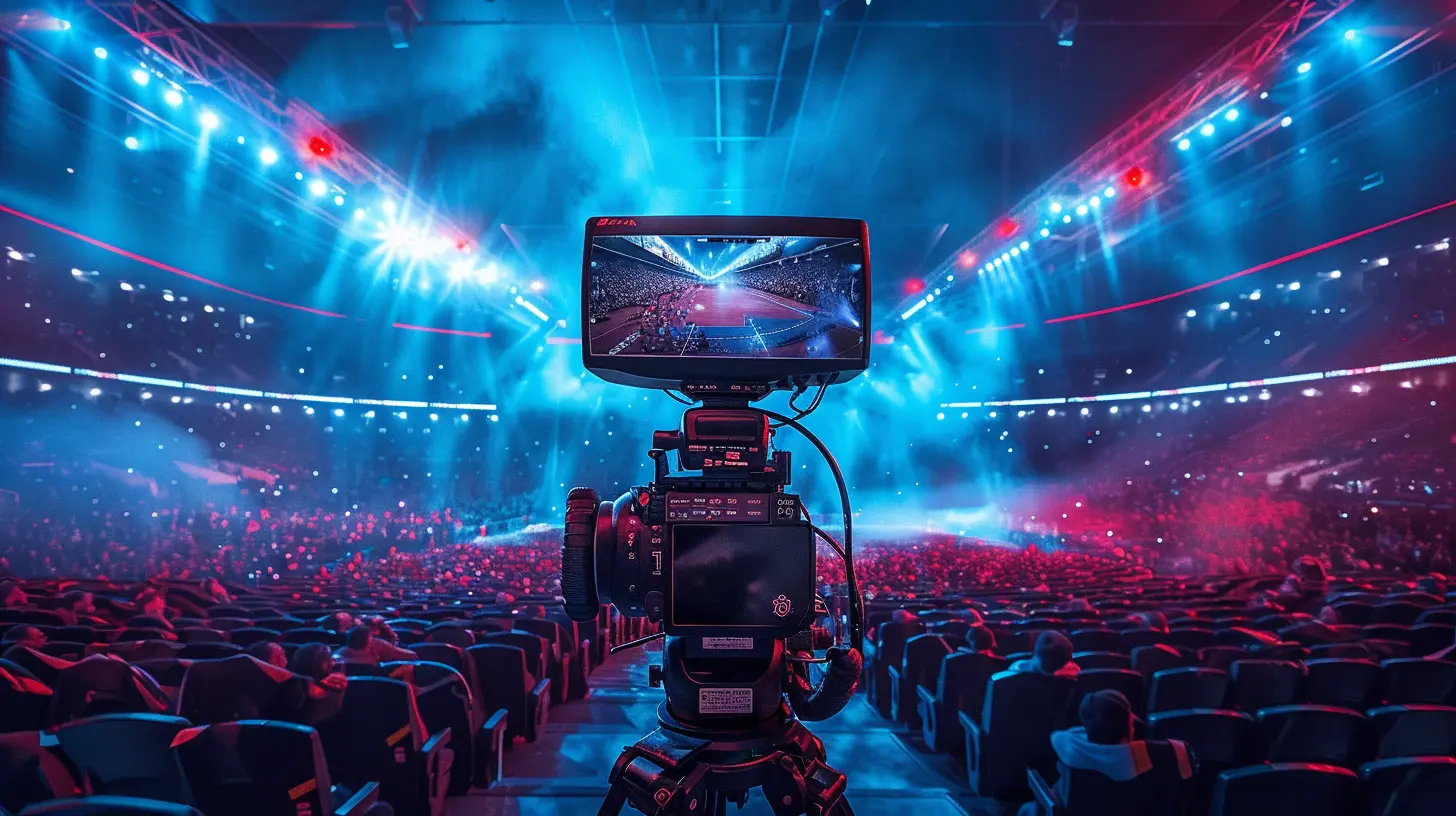Esports Broadcasting: The Next Frontier for Sports Networks
24 August 2025
The world is changing—fast. Blink, and you’ll miss the next big thing. But if you’ve noticed the rise of esports over the past few years, you know this isn’t just a passing phase. It’s a movement. A revolution. A digital coliseum where the gladiators don’t wield swords—they hold controllers, hone reflexes, and light up screens with stunning precision. And for traditional sports networks? Esports broadcasting is not just an opportunity—it’s the next frontier.
Let’s dive into how this digital evolution is flipping the script on sports broadcasting and opening new doors for networks looking to stay ahead of the curve.
The Digital Chant of a New Generation
Once upon a time, the roar of the stadium was all that mattered. The crunch of a tackle, the swish of a net—those were the sounds that ignited hearts. But now? It’s the click of a mouse, the thumping soundtrack of a live-streamed battle, and the synchronized cheers of millions watching from behind screens across the globe.Esports isn’t just gaming anymore. It’s an experience, a lifestyle, a full-on cultural phenomenon. Whether it’s League of Legends arenas packed like Super Bowl Sundays or streamers pulling Super Bowl-level viewership from their bedrooms, this isn't some niche—it’s mainstream.
And that’s where sports networks need to perk their ears.
Why Esports Broadcasting Makes Perfect Sense
Let’s face it. Traditional sports are aging. Look at the average NFL, MLB, or even NBA viewer—they’re likely older than the demographic advertisers crave. But esports? It sings sweetly to the 18-34 crowd. You know—the golden goose of marketing.Traditional networks are in a tricky spot. Ratings for some sports are slipping, cord-cutting is the new normal, and younger audiences? They’re tuning out of cable and logging into Twitch, YouTube, and Discord.
So what’s a sports network to do?
Simple. Go where the eyeballs are.
Esports: The Perfect Broadcast Match
Here’s the kicker—esports already has all the elements of an epic broadcast. Fast-paced action? Check. Colorful commentary? Got it. Dramatic rivalries and underdog stories? Oh, absolutely.Broadcasters just have to rewire their minds and gear their cameras toward virtual arenas.
Let’s break it down:
- Narrative arcs like those in traditional sports? Imagine watching an underdog team claw their way to victory in a Counter-Strike major.
- Star power? Streamers and players like Faker, Shroud, or Ninja are household names in the gaming realm.
- Tactical depth? Games like Dota 2 and StarCraft II are chess matches with lightning-speed execution.
- Live audiences? Stadiums filled with roaring fans, just like in “real” sports.
It checks every box—just with pixels instead of pigskins.
How Sports Networks Are Already Tapping In
Let’s not give traditional networks too little credit here. They’ve seen the shift. ESPN broadcasted Overwatch League matches. CBS aired ELEAGUE. Even BBC got in on the action, playing League of Legends tournaments on their channels.This isn’t a trend. It’s a pivot.
What’s happening is a soft transition—a testing of waters. Networks are figuring out how to mold their styles, formats, and expectations to fit this new beast. And yes, sometimes it’s awkward. But adaptation is the name of the game.
The Economics of Esports Broadcasting
So here's the big question everyone asks: Is there money in it?Short answer? Heck yes.
Long answer? ESports is a billion-dollar industry. And that number keeps climbing. Revenue streams gush from every corner: sponsorships, ad placements, media rights, merchandising, franchise fees, and more.
Broadcasting rights alone are goldmines. And guess who’s been mining them? Platforms like Amazon (via Twitch), YouTube Gaming, and Chinese giants like Huya. Traditional networks? They're catching up, and fast.
The real allure for networks comes in diversifying revenue and future-proofing their brand. Esports gives them access to new advertisers, different markets, and innovative content monetization strategies.
Viewer Habits Are Changing (And That’s a Good Thing)
Want to understand why esports is winning? Look no further than how we consume content today.People don’t want to be tied to schedules. They don’t want to sit through commercials. They want interactive, on-demand, multiscreen experiences.
Gamers and esports fans are digital natives. They’re used to splitting attention—chatting in Twitch, following Twitter reactions, and watching highlight reels on TikTok, all while streaming a live match.
It’s chaotic—and kind of beautiful. And sports networks, with their buttoned-up traditions, are finally learning to dance in that chaos.
Integration, Not Invasion
Let’s be real. The worst thing traditional networks can do is barge into the esports space and try to “fix” it.This isn’t broken. It doesn’t need fixing. It needs partnering.
The tone matters. The vibe matters. Esports fans are fiercely loyal, tech-savvy, and allergic to corporate cringiness. So if broadcasters want in, they need to adapt to the culture—not the other way around.
Hire commentators from the scene. Respect the pace and language of the games. Treat the community like collaborators, not commodities.
Streaming vs. Broadcasting: Coexistence is Key
Now you may be wondering, with Twitch and YouTube already dominating the scene, where do networks really fit in?Here’s how: they don’t compete—they complement.
Think of it like the Olympics. You can stream it online, but millions still tune into NBC for the curated experience. The polished storytelling. The high-production spectacle.
Esports can have both raw, streamer-led content and slick, network-branded productions. The key is to find balance.
Traditional sports networks know how to tell great stories. Esports has phenomenal stories begging to be told. Put them together? You’ve got magic.
The Tech Side of Things: Challenges & Opportunities
Let’s talk tech. Streaming an esports event isn’t like filming a basketball game. There are multiple camera angles (sometimes dozens), in-game perspectives, overlays, data layers, and flashy transitions.The visual complexity is a blessing and a curse.
Networks need to invest in smart, agile production crews. Broadcast engineers who can marry gaming knowledge with live TV expertise. But the payoff? Content that looks futuristic. Slicker than anything else on screen right now.
And with the rise of AR, VR, and AI-driven analytics, the ceiling for creativity is sky-high.
Esports is More Than Just the Game
One of the juiciest opportunities for networks lies beyond the matches themselves. We’re talking:- Behind-the-scenes content
- Player documentaries
- Training sessions
- Crossover events with athletes and streamers
- Lifestyle and culture shows
Think MTV meets ESPN with a gaming twist.
It’s not just about the big tournaments. It’s about telling the stories around them. The grind, the heartbreaks, the wins, the memes—esports is packed with emotional gold.
What the Future Might Look Like
Picture this:It’s Sunday afternoon. You flip on your smart TV. ESPN isn’t showing just football, basketball, or baseball. It’s broadcasting the Valorant World Finals, complete with stat breakdowns, expert panels, slow-mo replays, and sponsor integrations.
Then it cuts to a human-interest segment on a rising 17-year-old prodigy from Denmark, followed by a live Twitch embed where fans can interact, vote on “player of the match,” and win prizes.
That's not fantasy. That’s the near future.
From Cable to Clouds: The Evolution of the Sports Fan
The sports fan has evolved. They don’t just root for a team. They subscribe to streamers. They wear esports jerseys. They debate tier lists more than player rankings. They clip highlights, share memes, and engage across platforms.They are everywhere. And sports networks must meet them there.
It’s not enough to broadcast; they must engage.
Final Thoughts: Ride the Wave or Watch It Roll Over You
Esports broadcasting isn’t a gamble—it’s a golden ticket. For traditional sports networks stuck in relic-era thinking, it's a wake-up call they can't ignore.The digital stadium is buzzing. Audiences are swelling. Opportunities are blooming like spring after a long winter.
This isn’t just the next step.
It’s the next leap.
The frontier is digital. The battleground is virtual. The future of sports isn’t "coming."
It’s already here.
all images in this post were generated using AI tools
Category:
Sports BroadcastingAuthor:

Frankie Bailey
Discussion
rate this article
1 comments
Harmony Moore
Esports broadcasting is revolutionizing the sports landscape, bridging generations and redefining entertainment. As networks embrace this thrilling frontier, we’re witnessing the birth of a dynamic community that celebrates talent, passion, and innovation. Let the games begin!
September 15, 2025 at 12:47 PM

Frankie Bailey
Thank you for your insightful comment! Esports broadcasting truly is reshaping the sports landscape and creating a vibrant community that embraces talent and innovation. Exciting times ahead!


